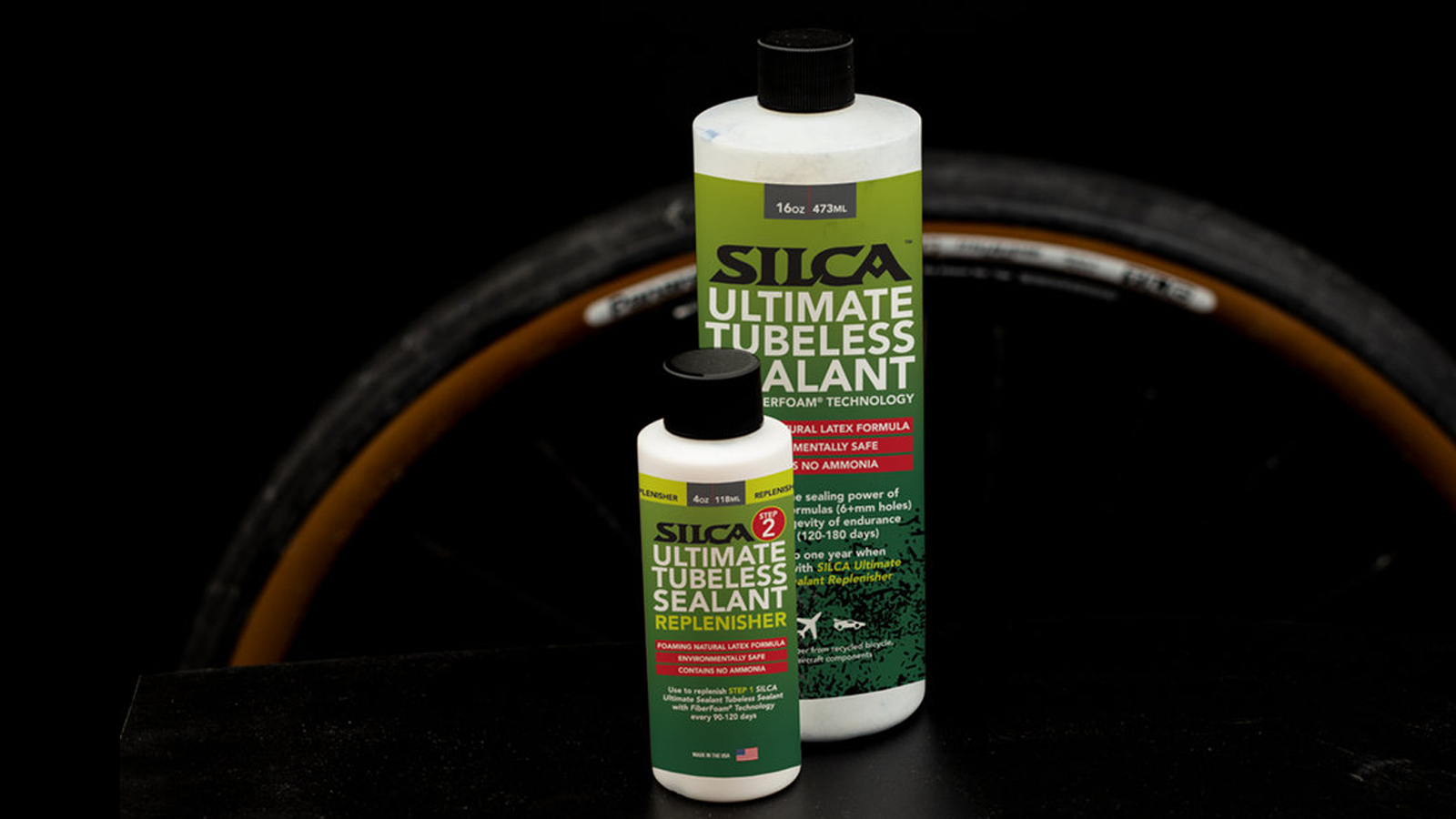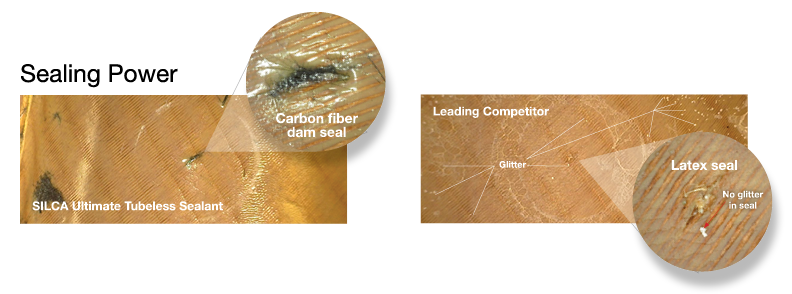Silca's 'Ultimate Tubeless Sealant' is made from recycled carbon fibre
Green credentials and a novel top-up system hope to get the seal of approval from riders

Although not universally accepted (yet), the benefits of tubeless tyres are winning over riders all the time. The Silca Ultimate Tubeless sealant hopes to mix it with the best tubeless sealant on the market with a novel mix of materials and a system by which you can prolong the life of the sealant by a refreshing top up of latex and solvent intermittently.
Tubeless sealant typically comprises a natural or synthetic latex, a solvent to keep it from drying out and more often than not some form of small particulates to help clog holes. As with so many things in life there are trade-offs; less solvent means more gloopy tyre goo but it’ll dry out more quickly. Less solvent gives you a sealant that’ll last longer, especially in arid conditions, but at the risk of not sealing holes so well.
What’s different about this sealant?
The Silca Ultimate Tubeless Sealant is, like all other sealants, a mix of Latex, solvent, and particulates. Where it differs is in the choice of materials, particularly the particulates. Until now, old carbon frames and components were destined for landfill, where they’d stubbornly resist breaking down for a good few millennia. Silca has decided there's a better option; crush them up and mix the fibres into their latest tubeless sealant.
Particulate addition has varied from microplastic glitter, through glass fibres to natural materials like walnut shells and cornmeal, so it was really only a matter of time before someone added carbon fibre to tubeless sealant - the list of non-carbon components is now one shorter.
Frames are crushed and ground into individual fibres, that are then, through a proprietary process, cleaned of the epoxy resins that binds the fibres together in bike components (and makes them so hard to break down). I was admittedly sceptical about how this could be achieved, and although the process remains a mystery, the resulting electron microscope images certainly attest to some extremely clean carbon fibres. Combine carbon with natural latex and you have a sealant that, should you blow out a sidewall and void the innards of your tyre into the environment it should do no damage save for some short lived unsightly splatters.
Natural credentials, though to be applauded of course, mean very little if the stuff doesn't work.

How does it perform?
Carbon fibres are famously light and stiff. It’s why so many of the best road bikes are made of the stuff but also why it, in theory, makes an excellent suspended particulate addition to tyre sealant. Being of low mass means a greater volume can be suspended in the latex and solvent without it settling out and clumping up, and the stiffness allows it to bridge holes and tears more easily against the air pressure forcing the sealant out through the hole. Silca claims that by using a mix of fibre lengths their Ultimate Tubeless Sealant can seal holes up to 7.5mm, which is 25 per cent larger than that of conventional technologies - no qualification as to what ‘conventional technologies’ consists of however.
Get The Leadout Newsletter
The latest race content, interviews, features, reviews and expert buying guides, direct to your inbox!
So, it can seal the best gravel tyres after you have a run in with some sharp flint but that’s only half the story. As mentioned earlier, if your sealant dries out in a fortnight it’s not going to seal anything at all. Silca has come up with a strategy to counter this issue - instead of replacing your sealant regularly, after initially filling your tyre with Ultimate Tubeless Sealant (into the tyre itself, not through the valve as it’ll clog), you can revitalise your setup with a shot of Ultimate Tubeless Sealant Replenisher (this time into the valve. The replenisher is basically the sealant without the fibres, and a bit more solvent to refresh the liquid inside that is yet to totally dry out, and should be added every three months
This will make the annual sealant cleanout and replacement a slightly more mucky job, and add more weight to the wheels than regular replacement would, but for those of us who dread tyre servicing day it could be just what the doctor ordered.
Price
Given 25mm tyres don’t require as much sealant as 2.7in mountain bike tyres, Silca is selling the Ultimate Tubeless Sealant in 8oz, 16oz, and 32oz bottles, which retail for $18, $24, and $38 respectively (approx. £14, £18, and £29). The Replenisher is only available in 4 oz bottles, retailing at $12 each (about £9).

Will joined the Cyclingnews team as a reviews writer in 2022, having previously written for Cyclist, BikeRadar and Advntr. He’s tried his hand at most cycling disciplines, from the standard mix of road, gravel, and mountain bike, to the more unusual like bike polo and tracklocross. He’s made his own bike frames, covered tech news from the biggest races on the planet, and published countless premium galleries thanks to his excellent photographic eye. Also, given he doesn’t ever ride indoors he’s become a real expert on foul-weather riding gear. His collection of bikes is a real smorgasbord, with everything from vintage-style steel tourers through to superlight flat bar hill climb machines.